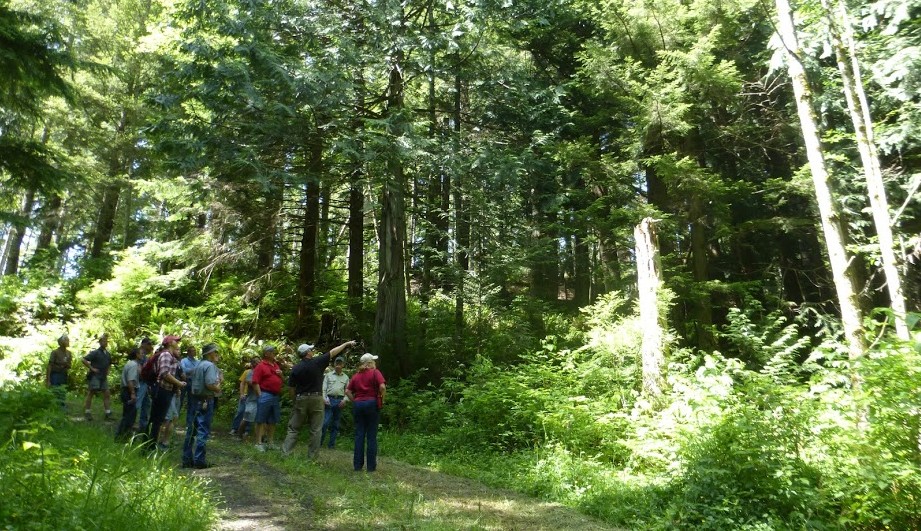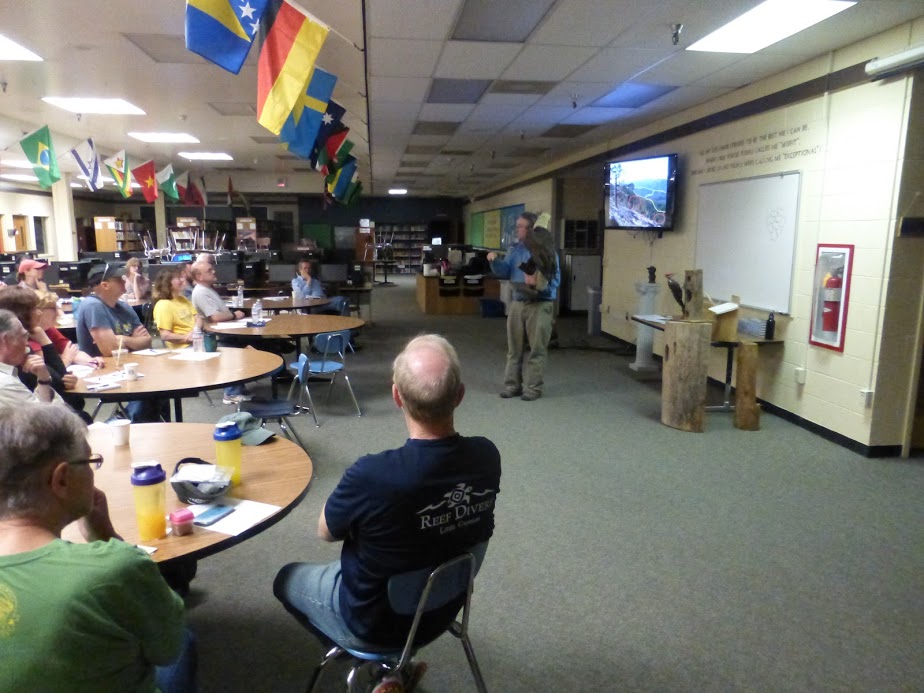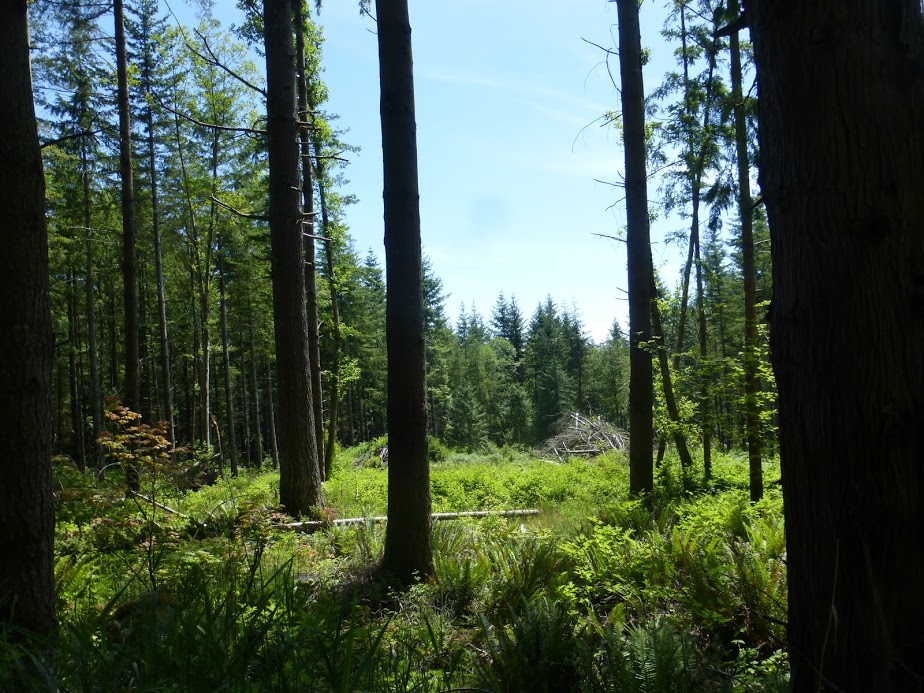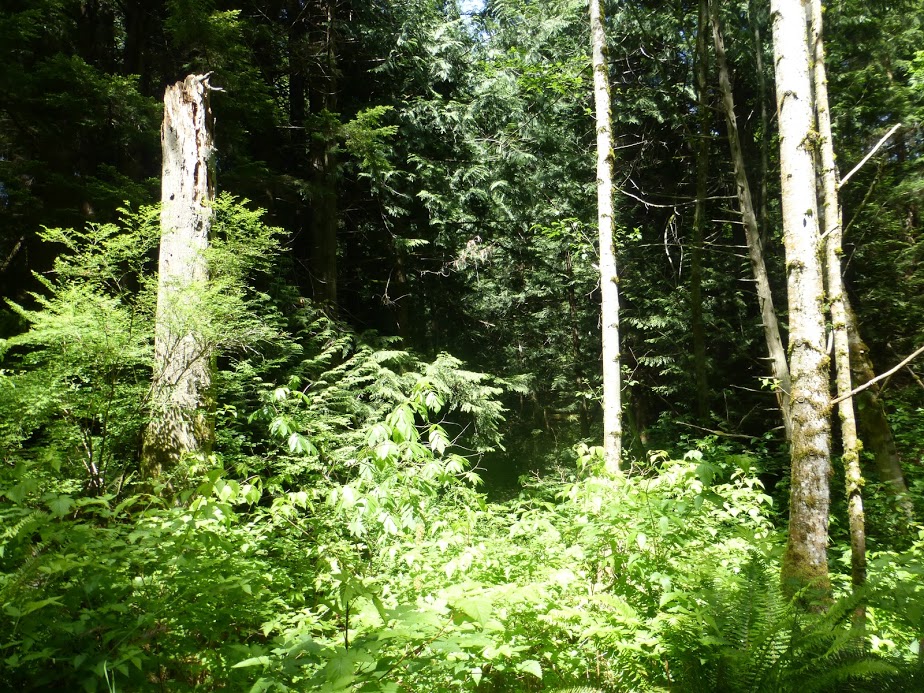Growing biologically rich forests for wildlife and income

On a beautiful summer day in early June, woodland owners gathered inside the library at Sedro-Woolley High School for the Managing for Timber and Wildlife workshop. The more than 20 participants were there to learn from Rolf Gersonde and Ken Bevis, two experts in the fields of silviculture and wildlife biology.
Rolf Gersonde, a renowned silviculturist and researcher for the City of Seattle’s Cedar River Watershed presented first, focusing mainly on sustainable forest management practices. He explained that creating stands that are diverse in age, class, and species would not only serve as sanctuary to many different types of wildlife but would also produce good-quality, robust timber in a management system that can respond and adapt to disease, fire, and disturbance. For example, diseases tend to be species-specific, so planting different types of trees will ensure that an entire stand will not be wiped out by single pathogen. This kind of safe-guarding is not only beneficial to wildlife but also to the landowner because it is less risky financially.
Ken Bevis, a DNR fish and wildlife biologist, presented next. Ken delivered his talk in a goofy and wildly entertaining manner, while the content mainly dealt with enhancing wildlife on private timberland. He especially stressed importance of leaving snags and woody debris intermixed throughout a forest. These wildlife habitat structures are especially important for small mammals, insects and birds. Unfortunately, forests that have been previously logged often lack enough of these essential components due to pile burning and the excessive removal of fallen logs. In terms of number and size, Ken suggested that about three snags per acre is a good rule-of-thumb, and that trees of different sizes are needed, but larger and taller trees of more than 15 feet in height and 20 inches in diameter are especially needed due to their ideal hunting perches for birds of prey and appropriately-sized habitat for larger birds such as the Pileated Woodpecker.

After a delicious lunch from the Skagit Valley Food Co-op, we headed for the Janicki family’s forest for a tour. The Janickis are well-known local foresters and own over 400 acres near Sedro-Woolley. We strolled through diverse stands of forest, with some areas recently thinned and other more mature riparian areas. As Mike Janicki showed us one of his hardwood and conifer-mixed stands, he stressed the importance of planting diverse species in the same stand, just as Rolf had illuminated in his talk. Pointing to another plot of trees farther away, he said, “I planted these Douglas-firs over a decade ago, but they are still so small.” He went on to explain that, for reasons unbeknownst to him, Douglas-fir trees simply do not grow well in that particular micro-area of his forest. Most likely, this lack-of-growth is due to the soil quality of that particular area. Therefore, instead of fighting the nature of his land, he simply planted trees that would take well to that section of the property. In this way, it is important to balance your vision of the ideal forest with what is a realistic expectation of the land.

Janicki also showed the group an opening in one of his stands. The area was harvested with the intent to create an open, meadow-like area. Creating a gap and breaking up the continuous forest canopy of the landscape helps mimic some of the functions early seral habitat. Early seral habitat is a stage of development in forests used by different species of wildlife, including neo-tropical migrants, small mammals, birds of prey, and deer and elk.
The Janickis also constructed a wildlife pile in the meadow. Creating a wildlife pile is a good alternative to simply burning your leftover slash from a thinning or harvest, and it will provide a home to many of the smaller critters in the forest. You can learn more about them here. Through trial and error and a good bit of experimentation, Janicki and his son have learned the best methods to steward the forest for coming generations while earning some income from their forestland, and fortunately the Janickis earnestly discussed with us both failures and successes throughout the years during the tour. The ability to see an example of a forest management practice that didn’t work as well alongside one that had great success was a very eye-opening experience for everyone.
The day ended with an open question-and-answer session on the Janicki land, where landowners got a chance to voice their questions and concerns with veteran forester Janicki as well as with Director of Forestry Kirk Hanson. Discussion included funding opportunities for diversifying your forest as well as enhancing habitat. After a few minutes of conversation, the group departed with new business connections, a better sense of sustainable forestry, and plenty of leftover chocolate chip cookies for the journey home!

Did you hear? DNR and NNRG have partnered to help woodland owners enhance stream habitat and improve forest roads on private lands in Skagit County. We will be providing workshops, technical assistance and one-on-one site visits. Learn more here.
Interested in attending one of our future events or reading another one of our articles? Visit the blog and find out more about our featured members and upcoming workshops!
If you missed this workshop but would like to learn more about these topics, please take a look at the presentations from the workshop:
- Uneven-aged Forest Management – Rolf Gersonde, Seattle Public Utilities, Senior Environmental Analyst
- Wildlife and your Western Washington woodland – Ken Bevis, WA DNR Landowner Assistance Fish & Wildlife Biologist
Also check out our Funding Your Forest series, where many resources for these themes and more have been provided: Enhancing Wildlife Article (TBA), Diversifying Your Forest Article.

Leave a Reply